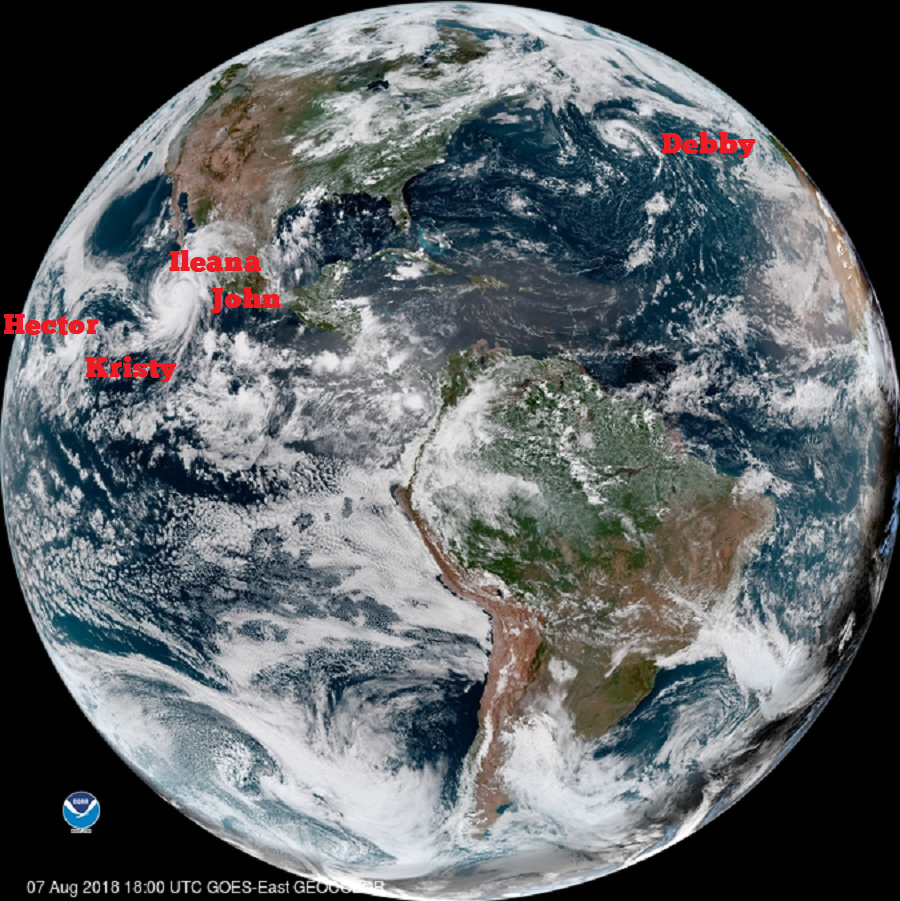
The hurricane basins in the Atlantic and Pacific have burst with new activity with several new storms. In the Atlantic, Subtropical Storm Debby formed while in the Pacific, Tropical Storm Kristy formed. Kristy joins John as Ileana dissipates in the Eastern Pacific; in the central Pacific, Major Hurricane Hector continues to march west, inching closer to Hawaii, but likely missing the Aloha State as it passes by.
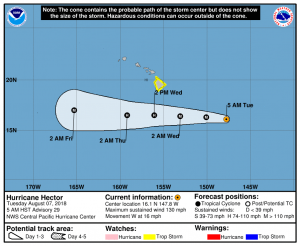
Of the bunch of storms, Hector is the strongest and has the greatest threat to the United States. Even so, though, Hector is forecast to pass far enough south from Hawaii to only bring rough surf to the islands and some enhanced gusty tropical showers to portions of the Big Island. The Central Pacific Hurricane Center has a Tropical Storm Watch up for Hawaii’s Big Island; there’s a chance some tropical storm force winds could move through portions of the island, with the best chance along the southernmost parts of the island. However, in the last track issued by the Central Pacific Hurricane Center, Hector is forecast to pass the Big Island by 150 miles to the south; with tropical storm force winds only extending 100 miles from the center, it is possible that tropical storm force winds won’t even reach the southernmost part of the island. Nevertheless, because hurricanes can occasionally surprise scientists with unexpected track changes, residents and visitors are urged to be prepared and to keep a watchful eye on the storm until it completely passes the island.
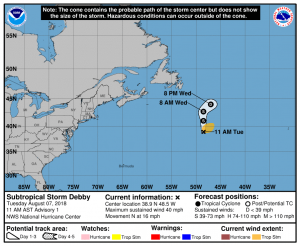
The newest storm of the bunch is Debby. A subtropical storm in the northern Atlantic, Debby is far south and east of Newfoundland and is expected to remain over open waters during its lifetime. A transformation to a tropical system is not expected nor are any direct impacts to any land mass. According to the National Hurricane Center, Debby is forecast to dissipate in the coming days. While its remnants will eventually make their way to Europe, they shouldn’t be much different from any other typical area of low pressure impacting the continent there.
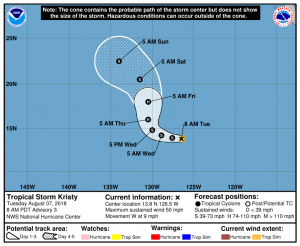
The newest storm in the Pacific is Kristy. Located in the central Eastern Pacific, Kristy is of no immediate threat to land. In the latest advisory issued by the National Hurricane Center (NHC) , the center of Tropical Storm Kristy was located near latitude 13.8 North, longitude 126.5 West. Kristy is moving toward the west near 9 mph; the NHC predicts the storm will westward today, gradually turning toward the west-northwest and northwest by Thursday. Maximum sustained winds are near 50 mph with higher gusts. Some strengthening is forecast, and Kristy could become a hurricane in the next day or two. Tropical-storm-force winds extend outward up to 35 miles from the center. The estimated minimum central pressure is 1000 mb (29.53 inches). Over time, moisture from Kristy could influence the weather in Hawaii, but such an interaction is more than five days away.
In the Pacific, Ileana is being absorbed by John. The remnants of the system are moving toward the west near 25 mph and are forecast to turn west-southwestward later today. These remnants will be absorbed within the outer bands of
Hurricane John by this evening.
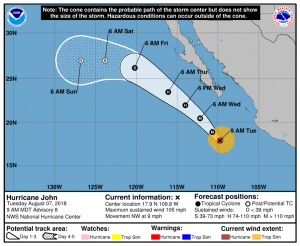
Hurricane John is forecast to become a Major Hurricane tonight or early tomorrow, but is also forecast to weaken over the next several days. In the latest update from the National Hurricane Center, the center of Hurricane John was located near latitude 17.9 North, longitude 109.8 West. John is moving toward the northwest near 9 mph , and a faster northwestward motion is forecast for the next few days. On the forecast track, John should pass to the southwest of Baja California Sur Wednesday and Thursday. Maximum sustained winds have increased to near 105 mph with higher gusts. Some additional strengthening is forecast during the next 24 hours, and John is forecast to become a major hurricane soon; but once it does so, steady weakening is expected to begin Wednesday night and continue into early Friday. Hurricane-force winds extend outward up to 35 miles from the center and tropical-storm-force winds extend outward up to 125 miles. The estimated minimum central pressure is 969 mb (28.62 inches)